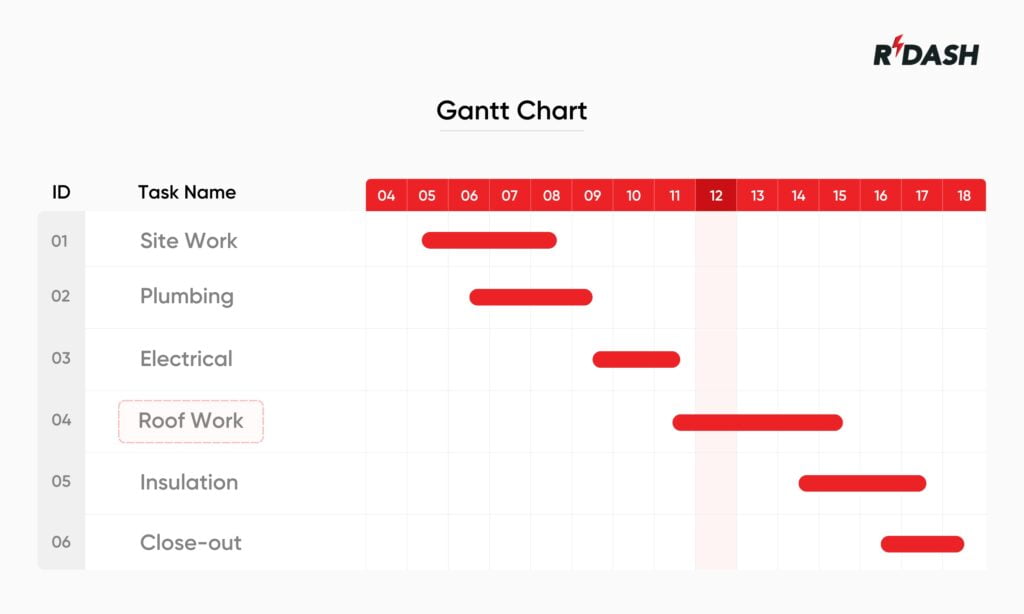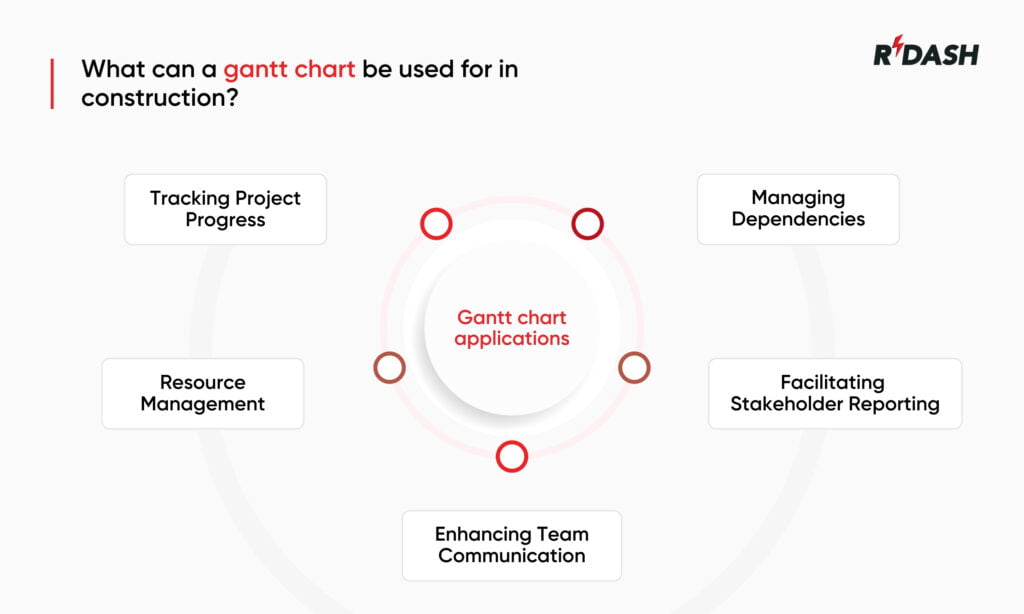In the world of construction management, staying on schedule is paramount, and that’s where a construction Gantt chart comes into play. This handy tool isn’t just a fancy spreadsheet; it’s a dynamic timeline that visually breaks down the entire project into manageable chunks, helping everyone from site managers to stakeholders keep a bird’s eye view on progress and timelines.
What is a construction gantt chart?
A Gantt chart is essentially a project management tool used extensively in construction to schedule project tasks. This chart is named after Henry Gantt, who popularized this type of visual scheduling at the start of the 20th century. Its strength lies in its ability to display the start and finish dates of different components of a project in a simple, horizontal bar chart format. Each bar on the chart represents a specific section of the project, making it easy to see what needs to happen, when it should start, and when it should be completed.

What can a gantt chart be used for in construction?
So, what can a Gantt chart be used for in construction? Quite a bit, actually. Here’s how these charts can make life on a construction site a bit less chaotic:
1. Tracking Project Progress: One of the fundamental uses of a Gantt chart is to monitor the progress of various project activities against their scheduled time frame. This transparency enables managers to spot any delays or overlapping tasks early, facilitating prompt modifications.
2. Resource Management: Gantt charts facilitate the effective allocation of resources. By looking at the chart, managers can see which tasks are critical and need more resources and which are ahead of schedule or can be delayed without affecting the overall timeline.
3. Enhancing Team Communication: These charts serve as a focal point for discussions about project progress and deadlines. They ensure that everyone involved is on the same page and understands what needs to be done, reducing miscommunications and ensuring smoother operations.
4. Facilitating Stakeholder Reporting: Gantt charts are excellent tools for updating stakeholders on project progress. They provide a clear and concise format to report back to clients or investors, showing how the project is advancing in relation to planned schedules.
5. Managing Dependencies: In construction, many tasks depend on the completion of others. A Gantt chart visually maps these dependencies, helping managers schedule activities in a logical sequence. This is critical for the timely and efficient completion of the project.
In conclusion, a construction Gantt chart is more than just a timeline; it’s a comprehensive planning tool that helps manage every aspect of a construction project, from resource allocation to stakeholder communication. By keeping all team members aligned and informed, Gantt charts pave the way for projects to be completed on time, within budget, and to specifications, making them an indispensable part of modern construction management.

Best practices for construction gantt charts
Construction Gantt charts are not just tools but strategic assets that can greatly enhance the management and execution of construction projects. By following best practices for Gantt charts and understanding their benefits, project managers can optimize their workflow and achieve better outcomes. Here’s how to leverage these charts effectively, alongside the advantages they bring and a practical example to guide you.
Keep It Updated: The most effective Gantt charts are dynamic tools that reflect the current status of the project. Frequent updates keep the chart current, ensuring it remains a dependable tool for planning and decision-making.
Define Clear Milestones: Break down the project into clear, manageable milestones. This not only helps in tracking progress more effectively but also provides the team with visible targets to achieve.
Integrate Dependencies: Properly mapping task dependencies is crucial in a Gantt chart. Understanding which tasks depend on the completion of others helps prevent bottlenecks and ensures smooth workflow throughout the project lifecycle.
Make It Accessible: A Gantt chart should be accessible to all stakeholders involved in the project. This fosters transparency and keeps everyone informed about project timelines and changes.
Use a Scalable Tool: Choose software or a tool that can handle the complexity of your project and scale as it grows. The right tool can make it easier to update and maintain your Gantt chart efficiently.
Why gantt charts are essential for construction projects
1. Enhanced Planning: Gantt charts provide a visual timeline for all project activities, making it easier to plan and allocate resources effectively. This visual planning helps in foreseeing potential issues and allows for better preparedness.
2. Improved Communication: With a clear, visual representation of the project timeline, team members and stakeholders can better understand their roles and the project’s progression. This clarity improves overall communication and coordination among the team.
3. Increased Accountability: By assigning tasks with specific timelines, charts help in holding team members accountable for their responsibilities. This enhances accountability among individuals and teams, propelling the project toward its on-time conclusion.
4. Efficient Resource Management: charts enable project managers to see overlapping activities and resource allocations, allowing them to manage resources more efficiently and reduce downtime.
5. Effective Monitoring: They allow for continuous monitoring of project progress against the planned schedule. Quick identification of delays or early completions can help in adjusting the project plan on the fly.
Construction Gantt Chart Example
Imagine a project to construct a residential building. The Gantt chart would start with groundwork and foundational tasks, followed by structural, plumbing, and electrical work. Each of these main categories would be broken down into smaller tasks like excavation, frame installation, wiring, etc. Dependencies might include not starting the framing until the excavation and foundation are complete. Milestones might be set for the completion of the foundation, reaching the top floor, and finishing interior fittings. Regular updates would keep this chart current, reflecting the real-time progress of the building site.
Using a Gantt charts in this way not only streamlines project management efforts but also enhances the likelihood of delivering a successful project on time and within budget.






